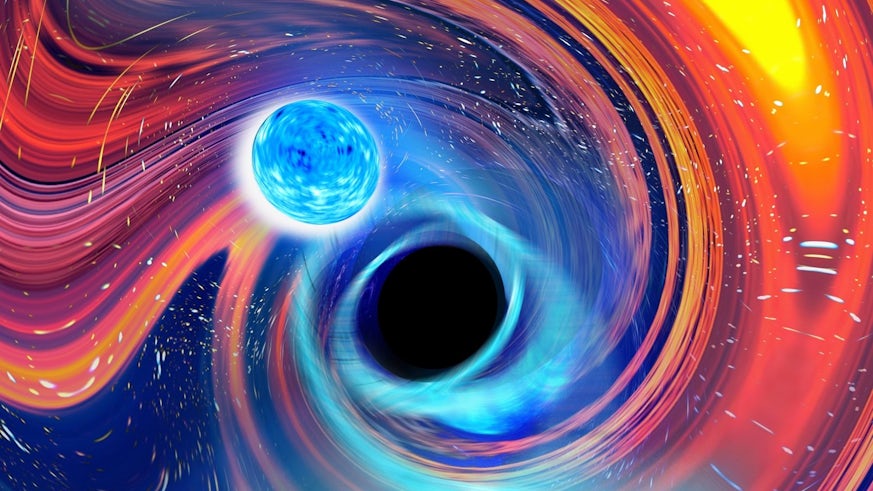Black holes of ‘all shapes and sizes’ in new gravitational wave catalogue
11 November 2021

The largest catalogue of gravitational wave events ever assembled has been released today, with dozens of ripples in space time captured by a global network of detectors.
The aftershocks of huge astronomical events, including rare mergers of neutron stars and black holes, were picked up by an international team of scientists, include experts from Cardiff University’s Gravity Exploration Institute.
A total of 35 new gravitational wave events have been detailed in today’s paper bringing the total number of observed events to 90 since the first detection was made in 2015.
The catalogue documents detections made between November 2019 and March 2020, using the two Advanced Laser Interferometer Gravitational-Wave Observatory (LIGO) detectors in Louisiana and Washington state in the US, and the Advanced Virgo detector in Italy.
Of the 35 events detected, 32 of those were most likely to be black hole mergers – two black holes spiralling around each other and finally joining together, an event which emits a burst of gravitational waves.
Two of the 35 events spotted were likely to be neutron stars and black holes merging – a much rarer event, and one that was only discovered in the most recent observing run of LIGO and Virgo.
Of these rare neutron star and black hole mergers, one event seems to show a massive black hole (about 33 times the mass of our Sun) with a very low-mass neutron star (about 1.17 times the mass of our Sun).
This one of the lowest-mass neutron stars ever detected, either using gravitational waves or electromagnetic observations.
Since the first gravitational wave detection in 2015, scientists have gone from observing these vibrations in the fabric of the universe for the first time, to now observing many events every month, and even multiple events on the same day.
To achieve this monumental progress, the pioneering instruments have been getting more sensitive thanks to a programme of constant upgrades and maintenance. In the third observing run, the gravitational wave detectors reached their best ever performance, as the lasers were tuned to even higher power.
Dr Katherine Dooley, from the University’s Gravity Exploration Institute, said: “The many new detections in the third observing run were made possible due to some improvements to the already impressively sensitive detectors, such as the implementation of the quantum technology of squeezed light and the use of higher laser power.
“Several other improvements also helped, like the reduction of stray light with many new baffles and improved optical coatings on the mirrors that reflect the laser beams.”
As the rate of gravitational wave detections increases, scientists have also improved their analytical techniques to ensure the high accuracy of results. The growing catalogue of observations is enabling astrophysicists to study the properties of black holes and neutron stars with unprecedented precision.
Dr Vaibhav Tiwari, from the University’s Gravity Exploration Institute, said: "Measurements on gravitational waves are gradually unravelling the mass, spin and distance distributions of these compact objects and interesting new patterns are being observed.
“Many of these are bringing novel and deeper insights into the ways in which these compact binaries are formed. We can expect a more complete understanding in the very near future."
The LIGO and Virgo observatories are currently undergoing improvement works before the upcoming fourth observing run, expected to begin next summer.
The KAGRA observatory in Japan will also join the next full observing run. Located deep under a mountain, KAGRA completed a successful first observing run in 2020, but has yet to join LIGO and Virgo in making joint observations.